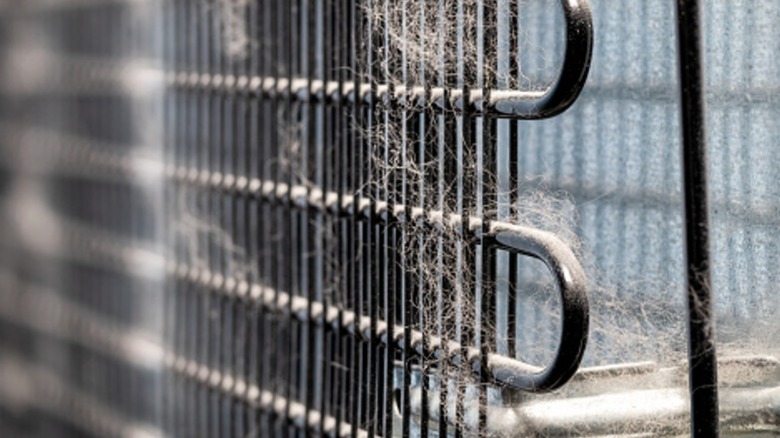How To Tell If Your Refrigerator Coils Need To Be Cleaned
We may receive a commission on purchases made from links.
Online household hints are often quite useful — how else would we know how to clean a microwave or make sheet pans look brand new? Some solutions, however, should be taken with more than a few grains of salt (a pantry staple that can also be used to scrub your Dutch oven). One example is the belief that you urgently need to clean your refrigerator coils or your entire fridge will melt down, your food will be ruined, and you'll undoubtedly be infected with some terrible food-borne disease. Okay, we may be exaggerating a teensy bit here, but then again, so are most of the articles, videos, and social media posts insisting that coil cleaning is necessary for every refrigerator. As it happens, most refrigerators these days don't need any coil maintenance at all.
In the past, refrigerator coils were sufficiently exposed to the elements that they were able to collect dust, pet hair, and other random schmutz, which would eventually impair their efficiency and lifespan. For the past 20 years or so, though, most refrigerators have been designed so that their coils are fully enclosed. This means they don't get too dirty, so there's no need to clean them. The exception, oddly enough, is with certain super-pricey refrigerator brands like Sub-Zero that can cost upwards of $20,000. These still use an open coil model. If your refrigerator dates from the 21st century and cost you less than half of what you paid for your car, there's a good chance you can forget all about the coils.
How to clean fridge coils if you have to
If you do own a fridge that's over 20 years old or a high-end model with open coils, yearly coil cleaning is probably on the cards. The problem lies in accessing them since the coils could either be behind a kickplate at the bottom or covered by a grill at the top, something that could require a screwdriver to detach. Needless to say, if you do have or can download an online version of your refrigerator manual, it will help with locating the coils. If you're lucky, the grill or kickplate will be at the front, but if it's around the back, you may need to seek assistance to muscle the fridge away from the wall. (Sub-Zero owners can probably delegate this chore to the butler.)
As for any necessary tools, a vacuum cleaner with a brush attachment will work, as will a good stiff cleaning brush. You can also purchase a specific tool such as the Ronsit refrigerator condenser coil brush, which is available from Amazon. (It also does double duty as a dryer vent cleaner.)
Once the coils have been accessed, the process itself is fairly easy. Unplug the fridge, then simply brush or vacuum away any dirt that may be clogging the coils. Re-attach the plate, plug in the fridge, shove it back into place, and breathe a sigh of relief that you won't have to do this again for another year. (Or never, if you've exchanged your refrigerator for a newer or cheaper model by then.)

